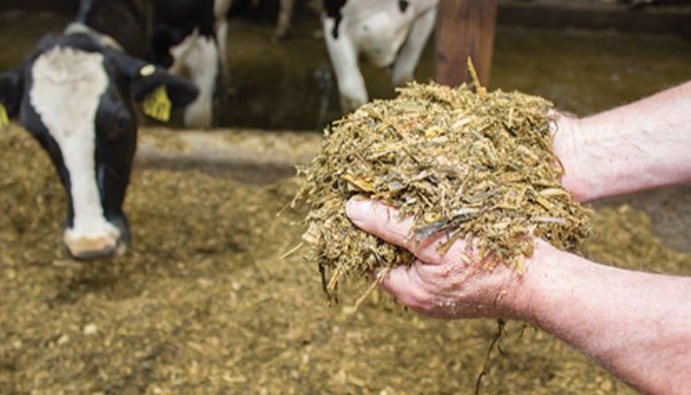Mycotoxin Detection in Silage Feeds: Risk Management
Mycotoxin Presence in Silage Feeds

What are Mycotoxins?
Mycotoxins are toxic compounds produced by mold species such as Aspergillus, Penicillium and Fusarium. These toxins are created by microorganisms that thrive in silage and can harm animals. Mycotoxins can increase health risks in silage feeds, which can lead to both animal health and economic losses.
Important Mycotoxin Species:
- Aflatoxins: May cause liver toxicity and suppress the immune system.
- Zearalenone: Negative effects on the reproductive system.
- Ochratoxin A: Associated with kidney toxicity.
- Deoxynivalenol (DON): May cause inflammation in the intestines.
- Fumonisins: May have toxic effects on the brain and liver.
Mycotoxin Detection and Risk Management in Silage Feeds
- Assessment of Risks:
- Mold Presence: In order to evaluate the quality of silage and mycotoxin risk, the presence of mold is first checked. The risk of mycotoxin formation increases in moldy silages.
- Storage Conditions: Humid environments, temperature and improper packaging of silage increase the risk of mycotoxins.
- Communication Level of Silage: Silage tightness and breathability can have a direct impact on mycotoxin development.
Mycotoxin Detection and Analysis Methods:
-
- HPLC (High Performance Liquid Chromatography): The most widely used method for the detection and quantification of mycotoxins.
- ELISA (Enzyme Linked Immunosorbent Assay): Provides rapid and reliable detection of mycotoxins.
- GC-MS (Gas Chromatography-Mass Spectrometry): Another method used to separate and analyze the chemical components of mycotoxins.
- Mass Spectrometry: It is a very sensitive method for mycotoxin detection. It has the ability to analyze multiple toxin types simultaneously.
- Rapid Test Kits: Provides rapid screening of mycotoxins but is limited in terms of accuracy.
- Risk Management:
- Internal Controls: Silage needs to be checked regularly for mycotoxin risk. This can reduce the amount of toxins, especially in moldy silage.
- Physical Controls: Proper storage and compaction of silage can prevent the formation of mycotoxins.
- Chemical Controls: Additives used in fermenting silage can inhibit the formation of mycotoxins.
- Biotechnological Controls: Addition of bacteria or yeasts that inhibit mycotoxin production by silage microorganisms.
- Feed Planning: Appropriate feeding programs should be established to prevent uptake of mycotoxins in silage by animals.
Silage feed, especially corn silage, is used worldwide in cow nutrition. Mycotoxins can be formed before harvest, during storage and during feeding.
Consumption of feeds containing mycotoxins by livestock jeopardizes animal performance and indirectly human health. Studies have shown that ruminants are exposed to mycotoxins such as aflatoxins, trichothecenes, ochratoxin A, fumonisins, zearalenone and many other secondary fungal metabolites through the silage feed they eat.
Problems with mycotoxins in silage can be minimized by preventing fungal growth before and after contamination. Proper silage management is essential to reduce mycotoxin formation in dairy cow forages and some mold inhibitor chemical additives or microbial inoculants. Several sequestering agents can also be added to feeds to reduce mycotoxin levels, but their effectiveness varies according to the type and level of mycotoxin formation.
Due to their hazards, mycotoxin detection in silage feeds is one of the important test parameters. The most common mycotoxins in forages include aflatoxin B1, deoxynivalenol (DON), zearalenone (ZEN), T-2 toxin and fumonisin. These mycotoxins are mainly produced by molds:
- Aspergillus requiring warm, humid conditions
- Penicillium requiring humid, damp, cooler conditions,
- Fusarium requiring damp, humid, cooler conditions
When fed to animals, mycotoxins can cause
- Reduced feed intake
- Low milk production
- Reproductive problems
- Death
Nanolab Laboratories Group continues to provide services within the scope of Mycotoxin Detection in Silage Feeds. We also provide services in various Feed Analyzes.
Contact us for more information.
You can follow us on LinkedIn for up-to-date news and posts about our services.
Follow our Instagram account to be informed about our latest blog posts.

